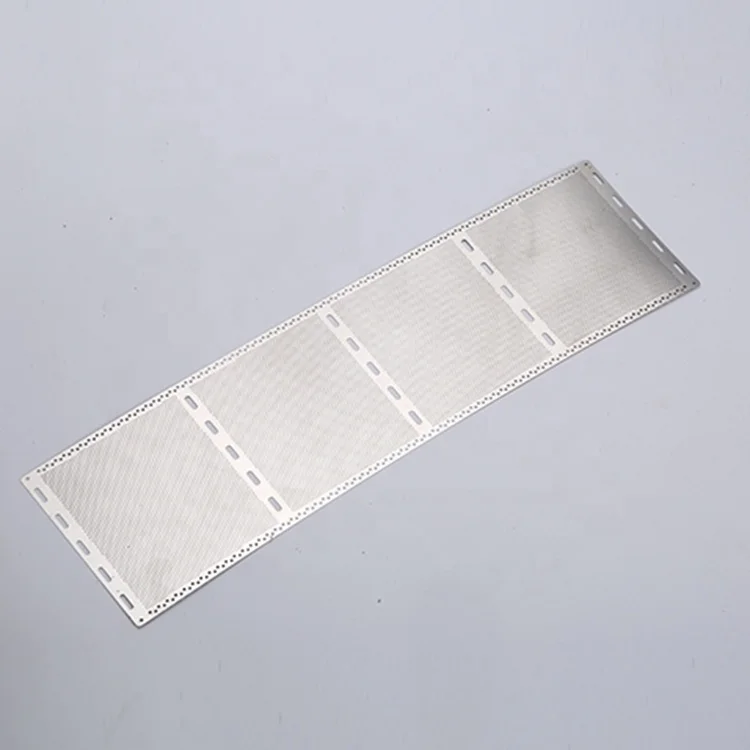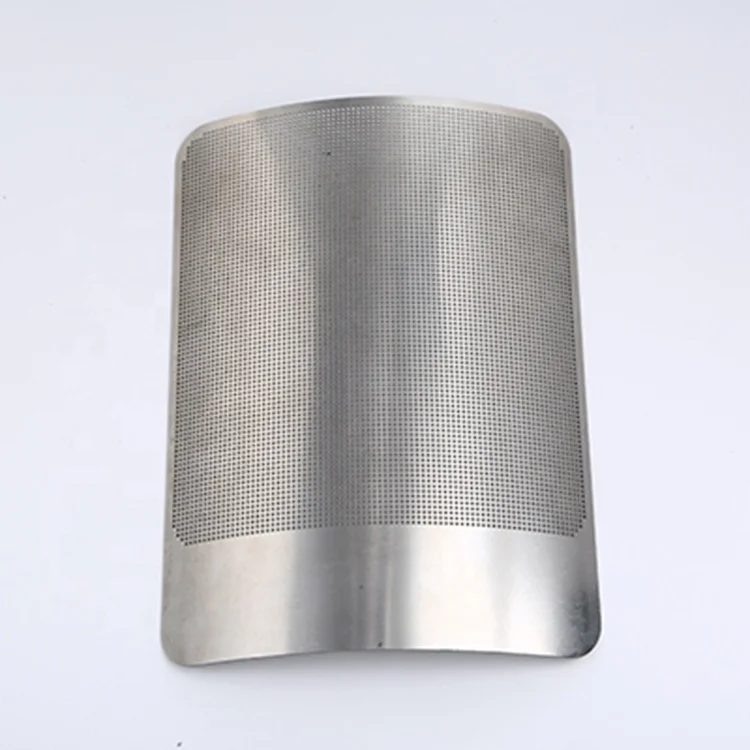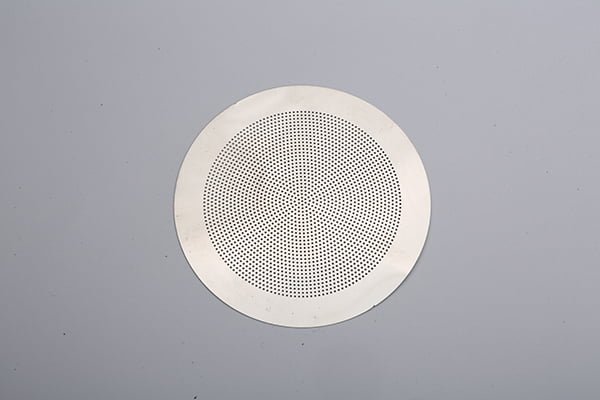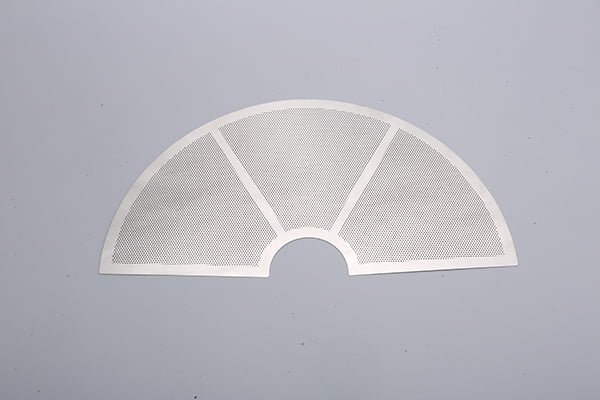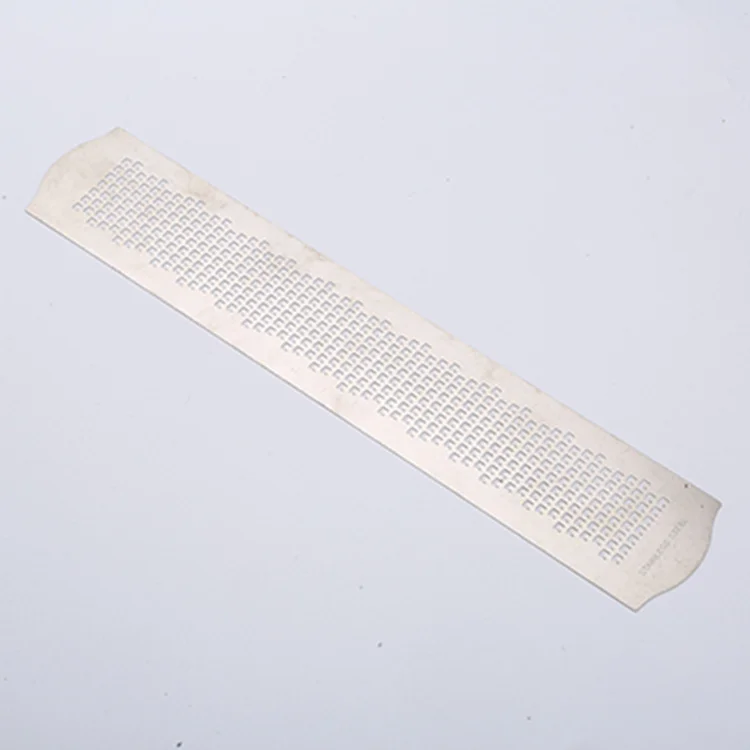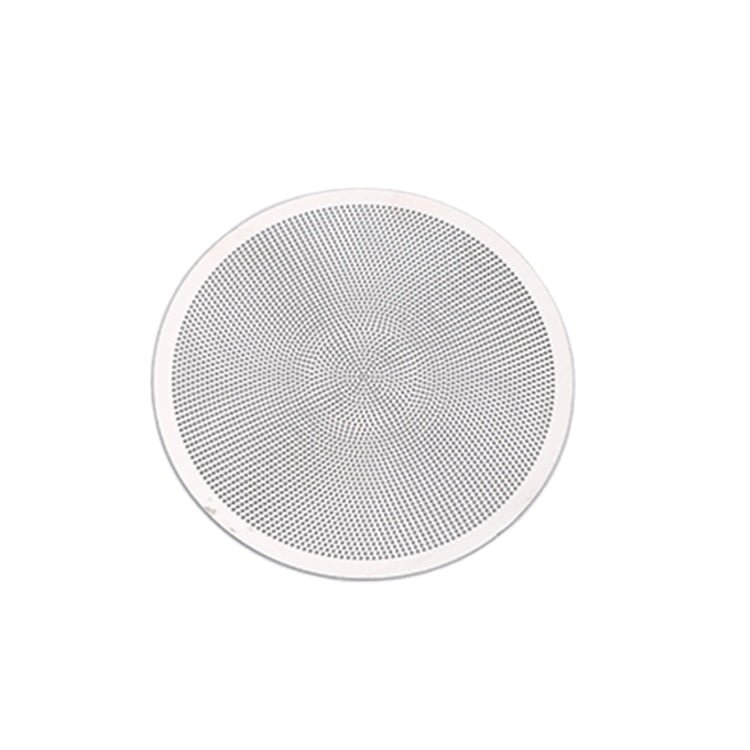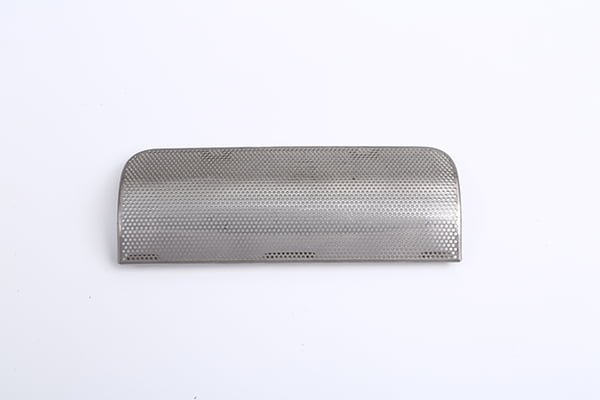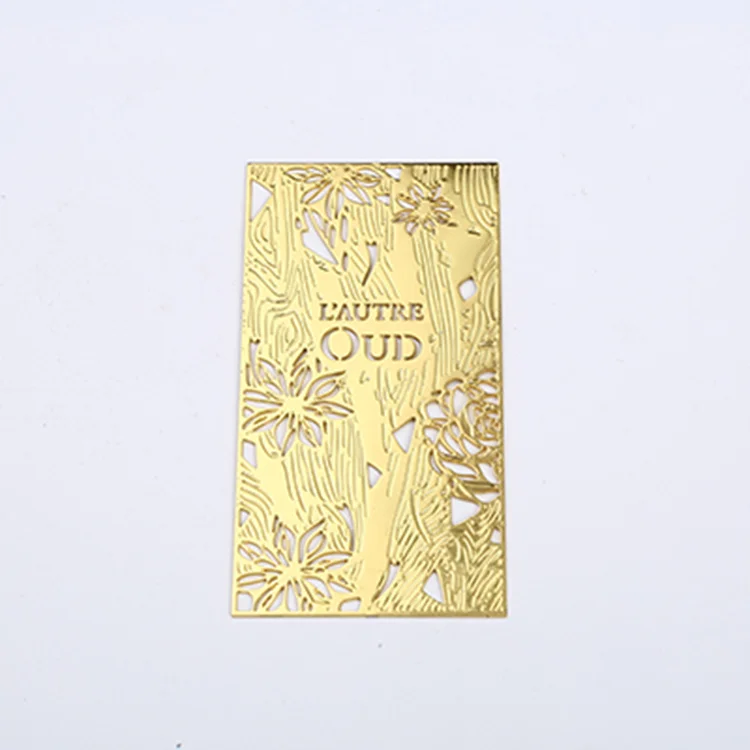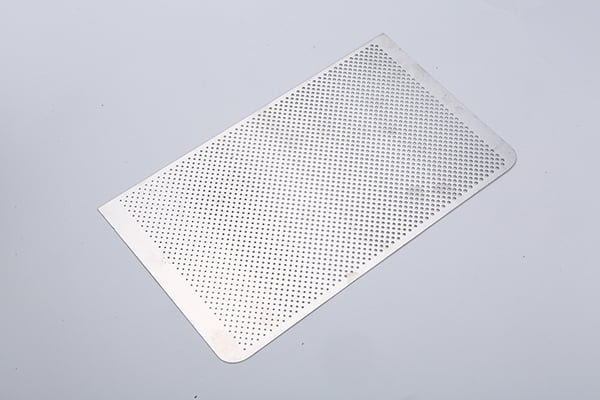Aluminum, a versatile and widely used metal, finds its applications in various industries due to its lightweight, corrosion resistance, and excellent thermal conductivity. The etching process plays a crucial role in shaping and refining precision machined aluminum components with high accuracy.
Our Packages
- From 1000pcs
- Samples from 100pcs
- Approx. 30 days (may vary depending on the difficulty of the drawing)
Aluminum etching production facility
Types of Aluminum and Etching Characteristics
Aluminum alloys are classified based on their alloying elements and properties. Some common types of aluminum alloys include:

- 1000 Series: Pure aluminum with excellent formability and corrosion resistance but limited strength. Not suitable for heat treatment.
- 2000 Series: Alloyed with copper, these alloys are known for their excellent strength, but they have poor corrosion resistance.
- 3000 Series: Alloyed with manganese, offering good formability and moderate strength, along with improved corrosion resistance.
- 5000 Series: Alloyed with magnesium, providing good weldability, formability, and high strength.
- 6000 Series: Alloyed with magnesium and silicon, known for their excellent extrudability and versatility.
- 7000 Series: Alloyed with zinc, these alloys have high strength and are used in aerospace and high-stress applications.
Advantages and Disadvantages of Etching Aluminum Alloys
Each aluminum alloy possesses distinct advantages and disadvantages in wet processing and etching:
- Etching 1000 Series: Advantages: Excellent formability, corrosion resistance, and electrical conductivity. Disadvantages: Low strength and not suitable for heat treatment.
- Etching 2000 Series: Advantages: High strength and suitable for structural applications. Disadvantages: Poor corrosion resistance and challenging to weld.
- Etching 3000 Series: Advantages: Good formability and improved corrosion resistance. Disadvantages: Moderate strength compared to other alloys.
- Etching 5000 Series: Advantages: Good weldability, formability, and high strength. Disadvantages: Limited corrosion resistance compared to some other alloys.
- Etching 6000 Series: Advantages: Excellent extrudability and versatility. Disadvantages: Lower strength compared to 7000 Series.
- Etching 7000 Series: Advantages: High strength and suitable for aerospace and high-stress applications. Disadvantages: Limited corrosion resistance and not as easily extrudable as the 6000 Series.

Metal Etching Aluminum
Metal etching precisely shapes and patterns aluminum components for various applications. The wet processing method involves metal etching machines and specific chemical etchants.
Chemical Etchants Aluminum:
- Alkaline Etchants: Utilized for general aluminum etching and surface cleaning.
- Acidic Etchants: Preferred for higher precision etching and finer details.

Precautions during Metal Etching:
- Follow safety protocols when handling chemical etchants, including proper ventilation and personal protective equipment.
- Adhere to etching time, temperature, and concentration to achieve precise etching results.
Etching aluminum is relatively straightforward, and there are several recommended etchants commonly used for this purpose. The choice of etchant depends on the specific application and desired etching characteristics. Here are some of the commonly used etchants for etching aluminum:
- Hydrochloric Acid (HCl) Etchant: Dilute hydrochloric acid or a mixture of hydrochloric acid and water is commonly used to etch aluminum. The etch rate can be adjusted by varying the concentration of the acid.
- Phosphoric Acid (H3PO4) Etchant: Phosphoric acid is another commonly used etchant for aluminum. It provides a controlled and uniform etch rate and is often used in microelectronic and microfabrication applications.
- Nitric Acid (HNO3) Etchant: Nitric acid can be used to etch aluminum, but it is more aggressive than hydrochloric or phosphoric acid, and caution should be exercised while using it.
- Sodium Hydroxide (NaOH) Etchant: Alkaline solutions like sodium hydroxide can also be used for etching aluminum. Sodium hydroxide provides a different etching mechanism compared to acids and is often used for specialized applications.
- Potassium Hydroxide (KOH) Etchant: Similar to sodium hydroxide, potassium hydroxide can be used to etch aluminum with different etching characteristics.
- Chromic Acid (H2CrO4) Etchant: Chromic acid is another etchant used for aluminum, especially in certain microfabrication applications.
Aluminum etching equipment
Wet Processing Equipment – Aluminum etching machine
The Aluminum etching machine is used to spray chemical solution to a copper-clad laminator, aluminum substrate, or stainless steel plate, the exposed copper, aluminum, and stainless steel are etched away, retaining the pattern or circuit covered by the corrosion-proof film, so as to achieve the purpose of making pattern or circuit.
This etching machine is an all-in-one small Aluminum etching machine that is easy to install and can be used immediately after powering on.
Photo Etching Aluminum
Photo etching is a precise and controllable process that uses light-sensitive masks to define patterns on aluminum surfaces. This technique enables intricate designs and high tolerances.
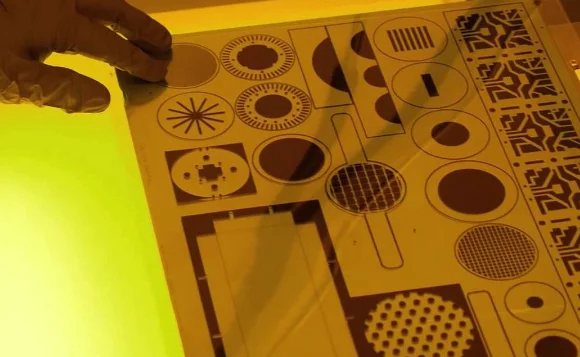
Etching precision machined aluminum materials involves understanding the different types, alloys, and their etching characteristics. The electroforming process, surface treatment, metal cleansing, and metal etching play pivotal roles in achieving precise and high-quality aluminum components. By selecting suitable processes and adhering to necessary precautions, manufacturers can harness the exceptional properties of aluminum for critical applications in various industries.
View our metal etching products
how to etch Aluminum?
Etching Aluminum Process Guidelines
| Aluminum Alloy Series | Etchant | Etching Temperature (°C) | Etching Concentration (%) | Estimated Etching Depth (microns) | Etching Quality |
|---|---|---|---|---|---|
| Etching 1000 Series | Hydrochloric Acid (HCl) | Room temperature | 10-15% HCl | 10-50 | High-quality (smooth) |
| Etching 2000 Series | Phosphoric Acid (H3PO4) | Room temperature | 10-20% H3PO4 | 10-60 | High-quality (smooth) |
| Etching 3000 Series | Nitric Acid (HNO3) | Room temperature | 10-20% HNO3 | 15-70 | High-quality (smooth) |
| Etching 5000 Series | Sodium Hydroxide (NaOH) | Room temperature | 10-20% NaOH | 20-80 | High-quality (smooth) |
| Etching 6000 Series | Potassium Hydroxide (KOH) | Room temperature | 10-20% KOH | 20-90 | High-quality (smooth) |
| Etching 7000 Series | Chromic Acid (H2CrO4) | Room temperature | 10-15% H2CrO4 | 10-50 | High-quality (smooth) |
The values provided are approximate and can vary depending on specific etching conditions, including exposure time and the condition of the aluminum alloy surface. Always conduct test etches and adjust parameters as needed to achieve your desired results. Additionally, safety precautions should be followed when handling these chemicals.
If you have metal wet etching Aluminum needs, please feel free to contact us.
FAQs
What metals can you use to customize my goods?
- Wet Etching Germanium
- Wet Etching Gallium Nitride (GaN)
- Wet Etching Indium
- Wet Etching Cobalt
- Wet Etching Tungsten
- Wet Etching Stainless Steel
- Wet Etching Aluminum
- Wet Etching Kovar
- Wet Etching Copper
- Wet Etching Steel
- Wet Etching Nickel
- Wet Etching Platinum
- Wet Etching Silver
- Wet Etching Rhodium
- Wet Etching Hafnium
- Wet Etching Vanadium
- Wet Etching Zirconium
- Wet Etching Titanium
- Wet Etching Niobium
- Wet Etching Tantalum
- Wet Etching Molybdenum
- Wet Etching Brass
- Wet Etching Rhenium
How quickly can I get your response?
Within 24 hours.
Will you do 100% inspection before shipping out the orders?
Yes we do.
Can I have prototypes or samples before placing the order?
Samples are always available.
Etching Aluminum Samples

